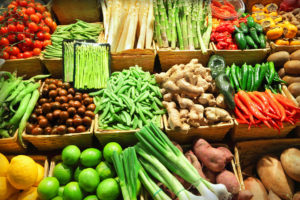One Zip Code at a Time: Tarrant County’s Retail Food Environment
January 11, 2022 • community
Guest blog article by Linda Fulmer, BSW, MEd
Executive Director, Healthy Tarrant County Collaboration
Healthy Tarrant County Collaboration (HTCC) has been working to address healthy food access in underserved neighborhoods for a few years now, and after reviewing the Baltimore City’s Food Environment: 2018 report, we wanted to do the same kind of study for Tarrant County. After all, even low income/low access neighborhoods are not totally devoid of stores selling food, and there are bright spots. But we faced several challenges, including:
- HTCC did not have funding for researchers to conduct the study or for a technology platform to manage the data and produce GIS maps.
- At 902 square miles, Tarrant County is approximately ten times the land area of Baltimore.
- With nearly 1,400 stores accepting SNAP in Tarrant County, plus more that did not, the number of stores to assess is also larger.
- HTCC’s paid staff consists of a ½ time executive director. Additional manpower is volunteer powered.
So, how could we realistically do this? We had to figure out how to replicate the Baltimore study with no money. Fortunately, in May 2018 an HSC MPH student began her 600-hour practice experience with HTCC. Ms. Samantha Harrison contacted the research team at Johns Hopkins, and they were happy to share their 32-point Healthy Foods Availability Index with us. We created Google Sheets files for each zip code, with a sheet for each store in that zip code, and Google Maps showing where the stores were located. In addition to tracking food availability, we also have been documenting the type of store (e.g.: gas station, dollar, pharmacy, supermarket) and presence of gambling machines.
In June 2018, Sam Harrison and additional BPH interns from Sam Houston State University and UTA began working, one zip code at a time, to survey the stores. Since then, as we have had student manpower available, we have continued to chip away at store surveys.
Full data collection was completed just over two years later – in July 2020. Our final report was released in March 2021, and posted online on the Tarrant County Food Policy Council website in October 2021. You may download the Tarrant County Retail Food Environment report at 3aa42d4ed5f3227a2126a1ff315f9dd5 (wsimg.com).
This solution required some time and hard thinking, but no particular funding. As a result:
- We believe it will be relatively easy to repeat this assessment regularly to keep the data fresh. The retail environment is continually changing, so it is important to keep the information updated.
- The data files may easily be shared with other organizations and researchers in Tarrant County for more in-depth analysis and study using their more powerful data and GIS platforms.
- Our approach makes conducting a retail food environment analysis possible for many communities and organizations, as there is no need to secure significant funding.
If you would like more information, or if you would like to help with the next round of data collection, please contact the author at LindaFulmer@sbcglobal.net or 817-451-8740.


Social media